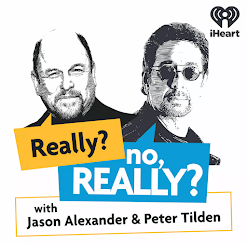Three possible solutions:
1. Don't contribute to the problem: when using an app to upload a picture to Twitter see if Twitpic is available as an alternative in-app uploader (eg on Echofon the default is Twitter but it can be changed to Twitpic. 'Twitter'-pictures will autopreview, but Twitpics pictures don't. Thank you! Mwah xx
2. @ajfisher has written a script that can be copied and pasted into the 'Stylish' (free) Chrome plugin. I've tried it, it works - hooray, and also gets rid of promoted tweets. If anyone hears of anything for Firefox do let me know.
• Twitter Web Client Inline Image Removal
3. Thanks to @latentexistence I heard of a way to use AdBlock to hide the images - you can still click on the tweet to expand as before but it seems to work (I've not tried it myself as I don't use AdBlock).
• How to hide Twitter preview images with AdBlock
More detailed information
OK, I've solved the internet ;) Don't use pic .twitter .com to upload pics to Twitter (use Twitpic instead) & timelines will be less piccy.
— Jo Brodie (@JoBrodie) October 30, 2013
What's this all about?
For anyone reading their tweets through Twitter.com's website it's now a bit hard going. Here's what Twitter looks like on my desktop now. The two tweets shown have a picture with them which Twitter's now displaying automatically in preview mode. Can't escape this and as you can see it takes up rather a lot of space.

As of Tuesday 29 October 2013 Twitter's implemented a new thing in which it automatically shows a preview pane of any image or video ('media') that's been included in a tweet. You can still click on the tweet to expand both the tweet and the media viewer as before but it seems that if you're using http://twitter.com (and to be fair, loads of people don't!) then you can't escape the previews. You can switch them off in most apps though, but not on the website version of Twitter.
What can be done?
• To stop contributing to the problem don't use pic.twitter.com to upload pictures from smartphones / tablets.
This seems to be the default setting on Echofon for iPhone but was easily fixed by going to Menu » Settings » (scroll down to Advanced) » Photo Upload » (select Twitpic). I'm sure something similar exists for other apps and smartphones / tablets.
If you upload photos to Twitter directly from your photostream (eg you've previously authorised your Photos app to use your Twitter account) then images will show up on Twitter as being sent via 'Camera on iOS' and will show up as pic.twitter.com with autopreviews.
Oddly, if you're using Twitter.com on a desktop and want to upload a picture using the button that should be visible in the tweet below it does use pic.twitter.com but doesn't autopreview it. I can't explain that at the moment.
Test to see what happens when I upload a photo on Twitter dot com using the photo button pic.twitter.com/gNymRfc4sc
— Jo Brodie (@JoBrodie) October 30, 2013
• To stop experiencing the problem don't use twitter.com on PC or Mac to view tweets.
This seems like admitting defeat though! But if you want to there are plenty of desktop apps such as Dabr and Janetter, all with free versions available.
What about other picture uploading apps?
I've only looked at a few of them, but here's what I've found
a) pic.twitter.com - via smartphone apps it activates Twitter's automatic preview thing, via web-based version it doesn't appear to do so.
b) Twitpic - doesn't activate preview
c) imgur - doesn't activate preview
d) Instagram - doesn't activate preview
The big advantage of b) Twitpic is that if you click on the tweet it will expand and show the preview, but no preview while it's unclicked. Imgur and Instagram are 'off site' photo hosting apps and you have to click on the URL to view the pic, clicking on the tweet to expand doesn't do that. None of b), c) and d) will show a preview. Until Twitter changes them too ;)
Further reading
Lots of people ranting on the Twitter forum for Twitter developers (dev.twitter.com) - Why are pictures suddenly shown in the timeline without a "show picture" link? PLEASE ROLL THAT BACK, THANKS!
BuzzFeed on Why Twitter Just Turned Itself Inside Out: Clicking is dead, scrolling is king. Twitter, Facebook, Instagram, and the fight for the ultimate feed
ZDNet on How to hide Twitter preview images with AdBlock













